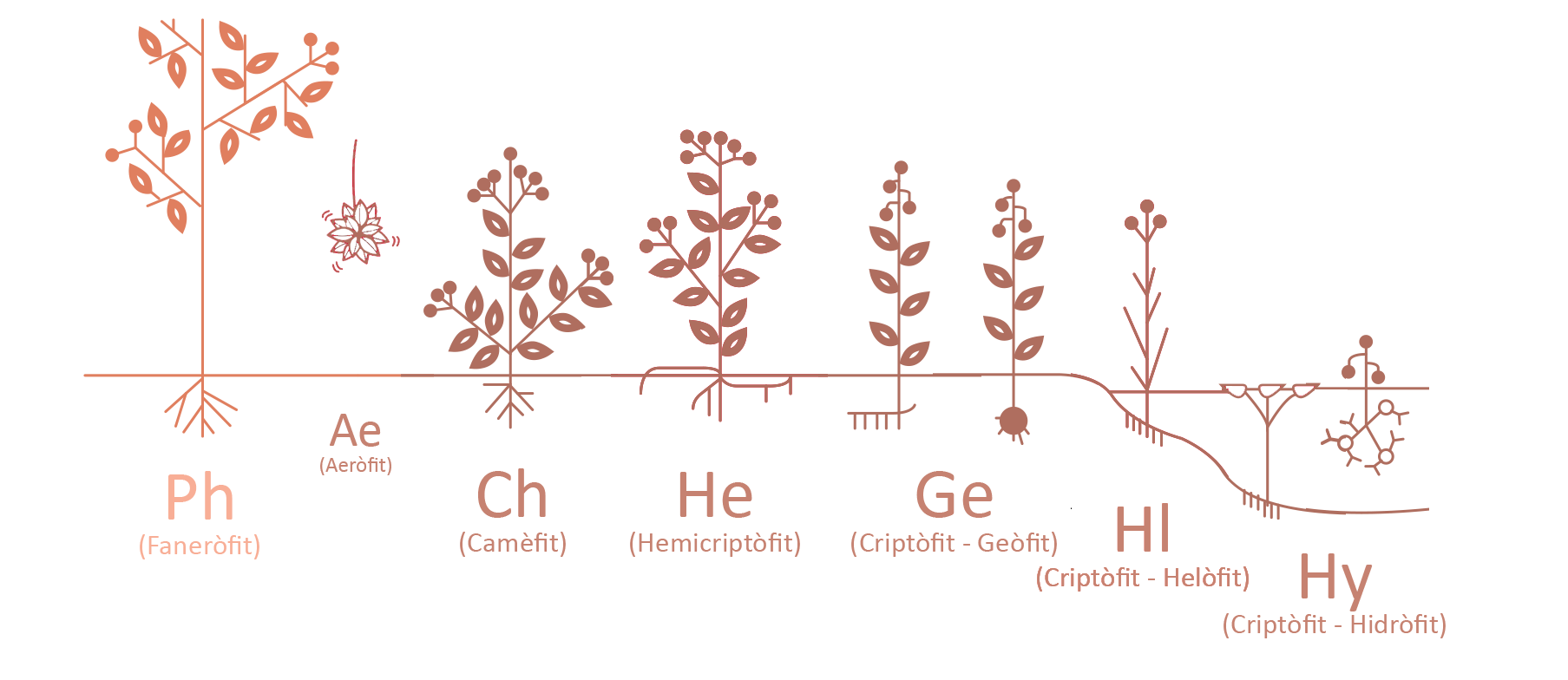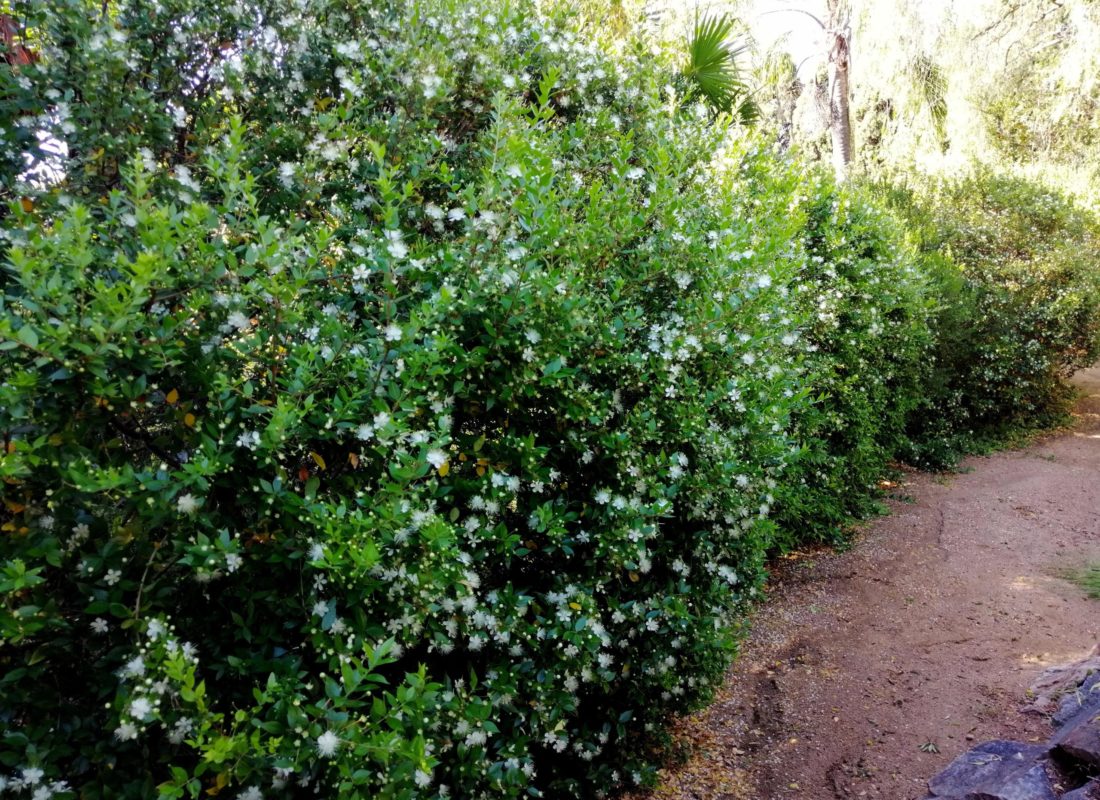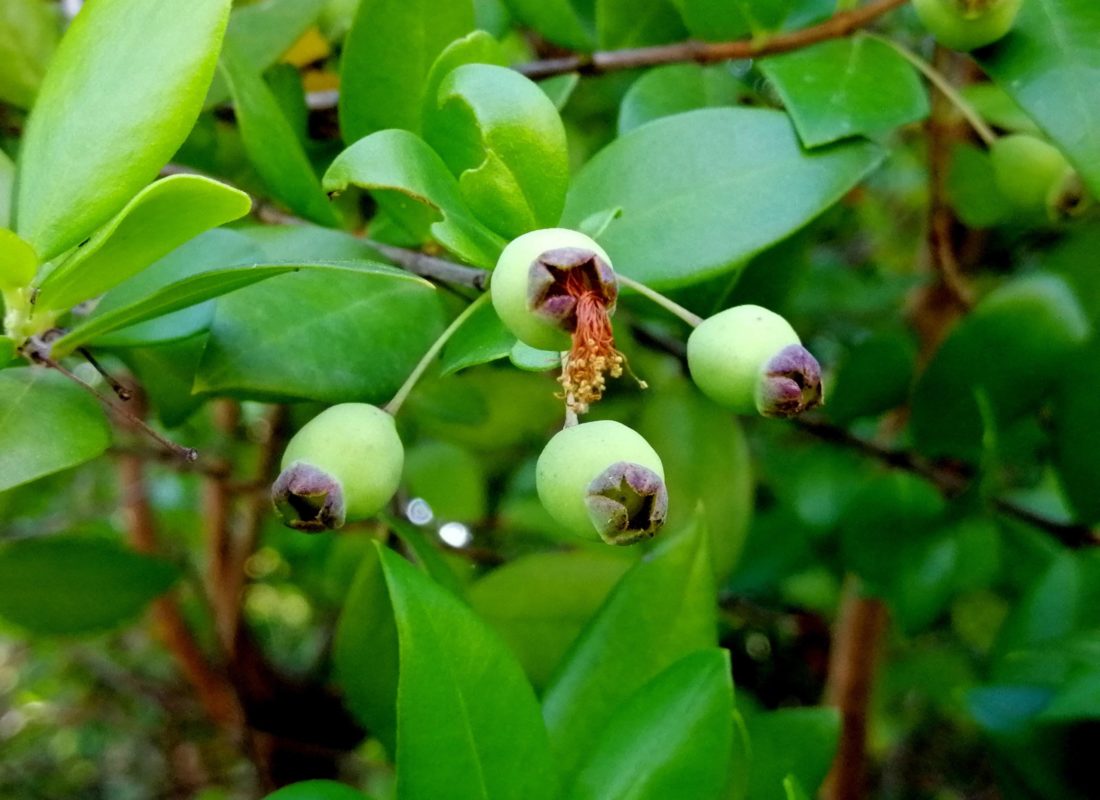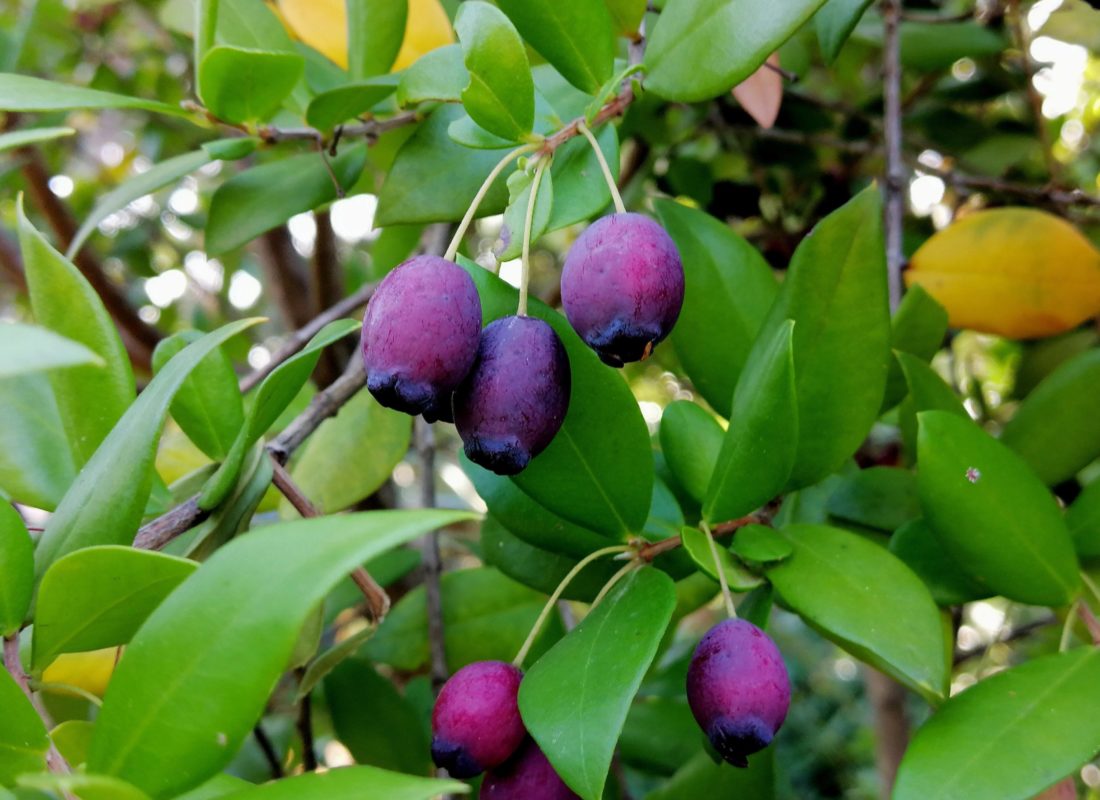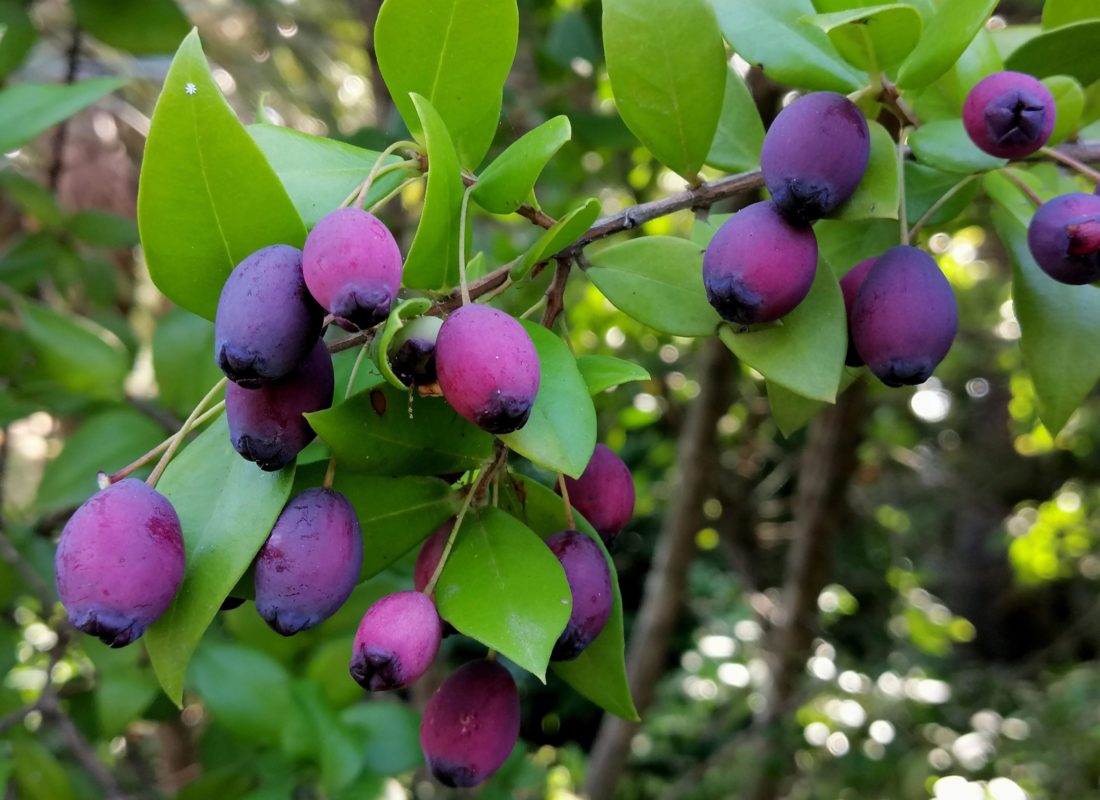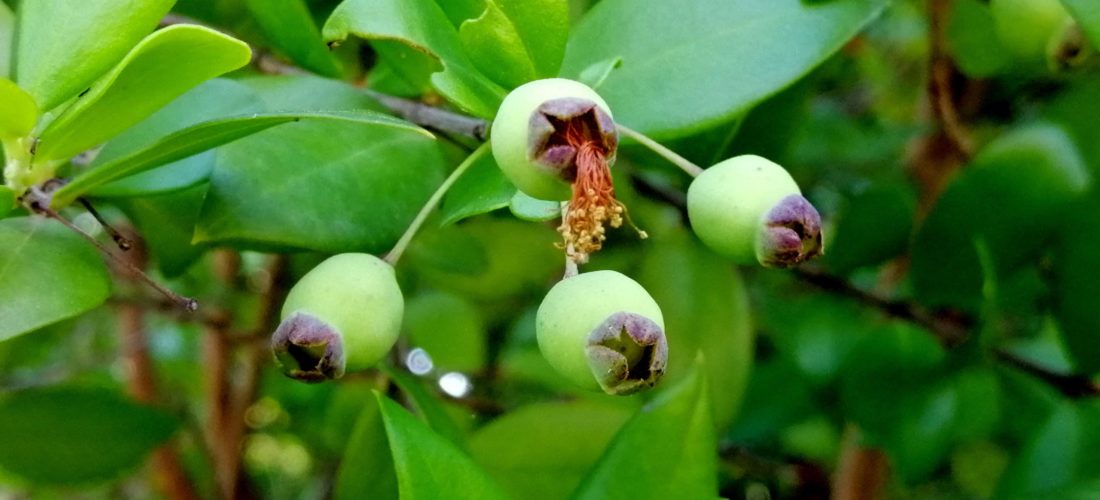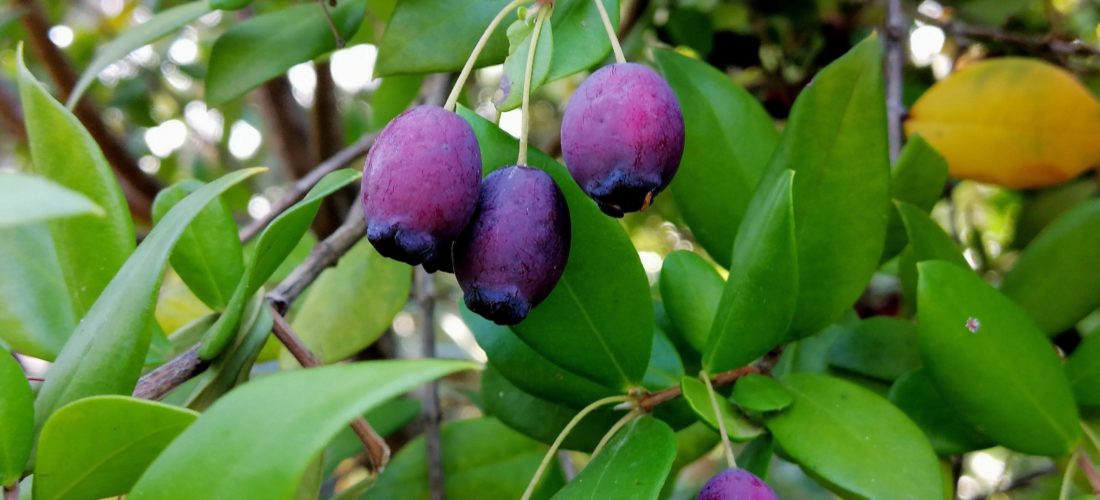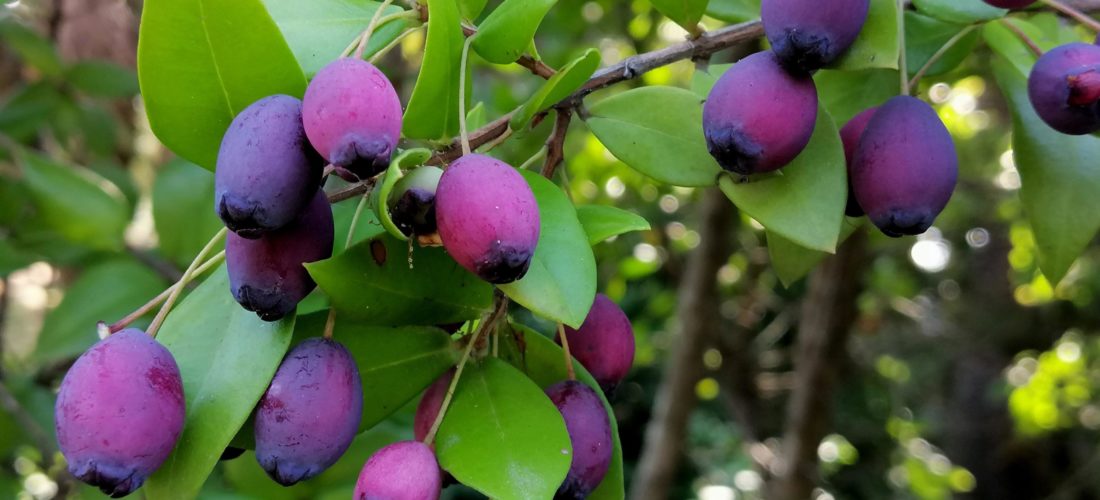Myrtus communis L.
Murtra
Scientific name: Myrtus communis L.
Family: Myrtaceae
Origin: Mediterranean
Year planted: Beginning of the garden, before 1930.
Flowering: July – August.
Description
Myrtle is a very dense, rounded evergreen shrub that can reach 5 meters in height. The leaves are sturdy and bright green, and when rubbed, they give off a very characteristic smell.
It has white flowers, which also smell very good.
The fruit is called Murtón, and they are blackish-blue berries that can be eaten.
Marimurtra’s specimens
The name of the Marimurtra Botanical Garden comes from the cliffs that run from the garden towards the sea, and from the myrtle that grows here.
Before, this land was vineyards, abandoned because of phylloxera, a pest that infected the vine plants. Myrtle was among the plants that grew here wildly.
In the garden there are still some of those original myrtle specimens. Others were planted later, such as little-leaved myrtle.
Did you know..?
The Murtón is an edible fruit. In Catalonia it is used to make myrtle wine.
In Corsica and Sardinia it is also used to produce a liquor : the liquore di mirto. Besides that it is used in perfumery and medicine. For example as a digestive and against respiratory and urinary conditions, among others.
It is a plant that is very present in the Mediterranean, with different uses and meanings:
- Classical times: it was associated with the goddess Aphrodite.
- Roman times: it was planted in the temples of Venus.
- In Muslim tradition, it was one of the pure elements that Adam brought to the Garden of Eden.
- In Jewish tradition, it is one of the 4 sacred plants of the festival to commemorate the exodus of the Hebrew people to the Promised Land.
It also symbolizes good luck and is the symbol of poets. Some brides use it to make their wedding bouquets as a symbol of purity.
Threat level (UICN)

Main uses

Raunkiaer Life Forms
